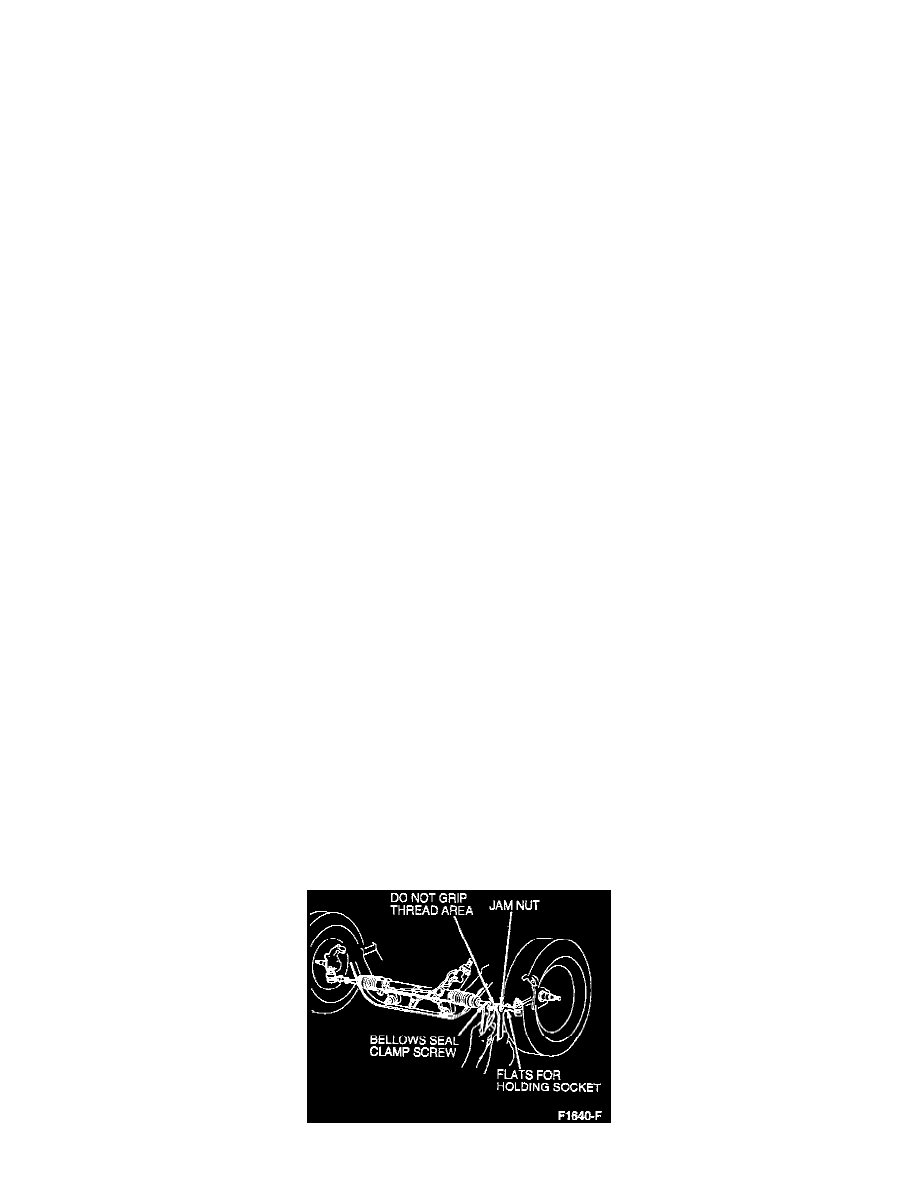Mustang GT V8-4.6L SOHC VIN X (1998)

1. Spare tire, wheel, jack and jack handle in position
2. Front seats in rearmost position
3. All other loading removed
4. All tires inflated to specified pressure (cold)
5. All excessive mud, dirt and road deposit accumulation removed from chassis and underbody
Ride Height Correction
Examine the vehicle for indications of abnormal attitude, such as the front or rear end being higher or lower than normal. Any heavy items in luggage
or passenger compartments should be removed before checking wheel alignment.
If vehicle altitude is not normal and no unusual load is present, check for signs of damage or nonstandard replacement suspension parts.
Steering Angle
NOTE: Perform the steering angle check before toe-in measurement (if any steering angle corrections have been made).
Check the wheel steering angles at full right and left positions. If the angles are not within specification, the front wheel spindle tie rods must be
adjusted to the right or left until the steering angles are equal.
Adjustment of the front wheel spindle tie rod affects the centering of the steering wheel in the straight ahead position. Adjustments can be fine-tuned
by shifting the tie rod ends a small amount away from the equal angle setting. If the steering wheel cannot be centered with the steering angles within
specification, check for improper assembly or installation of the following steering components:
-
Rack and pinion steering gear.
-
Steering column assembly.
-
Steering wheel.
Adjust the steering angles as follows:
1. With paint or marking pen, mark both tie rod ends, front wheel spindle tie rods, and jam nuts in their original positions. These reference marks will
help in equalizing right and left adjustments.
2. Remove the tie rod boot clips and free the boots to prevent them from being twisted when the front wheel spindle tie rods are turned.
3. Loosen and back off the front wheel spindle tie rod end jam nuts.
4. To avoid toe-in change, turn one front wheel spindle tie rod into, and the other out of, the tie rod ends by equal amounts. This shortens one front
wheel spindle tie rod and lengthens the other, shifting the rack right or left until the rack teeth are centered on the pinion and rack travel from the
centered position is equal in both directions. This equalizes the wheel steering angles but also rotates the pinion and steering wheel.
5. Position the wheels straight ahead and check the steering wheel centering. If close to correct, shift the rack and tie rod ends left or right without
turning the wheel, to center the steering wheel. A shift to the left will turn the steering wheel clockwise, and a shift to the right will turn it
counterclockwise, as seen from the driver seat.
6. Verify that the wheel steering angles are still within specification. If not within specification, the steering wheel can be removed and shifted on the
steering column shaft to center it.
Suspension Inspection
Do not check and adjust front-wheel alignment without first making the following inspection for front end damage or wear:
1. Check for specified air pressures in all four tires.
2. Raise the front of the vehicle off the floor. Check the front suspension lower arm ball joint and mounts for looseness, wear and damage. Check the
mountings. Tighten all loose nuts and bolts to specification. Replace all worn parts.
3. Check the steering gear mountings and all steering linkage connections for looseness. Tighten all mountings to specification. If any of the linkage
is worn or bent, replace the parts.
4. Have an assistant grasp the lower edge of the tire and move in and out. If any in-and-out free play is noticed, refer to Component Test and check
front suspension lower arm ball joint.
5. Check the action of the front shock absorbers and the condition of their attachments. A sticking or binding shock absorber may not allow the
vehicle to settle in a normal, level position, possibly affecting the front wheel alignment.
Toe
